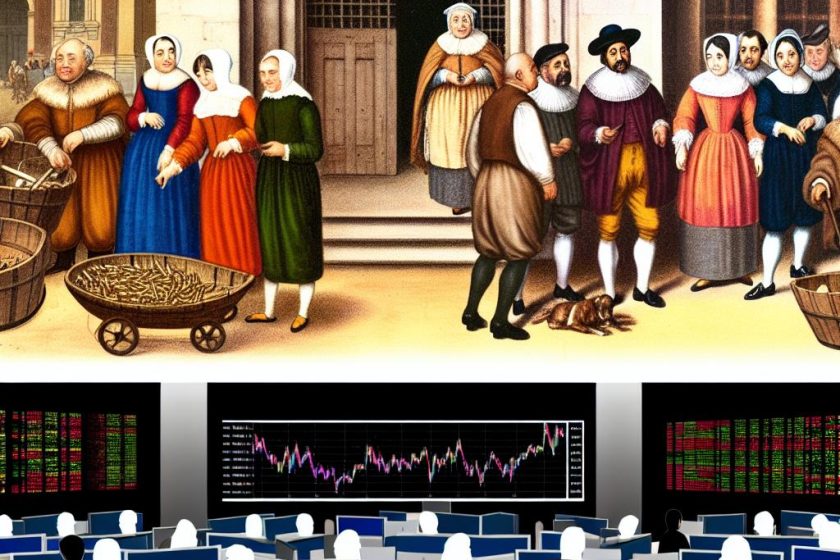Understanding Stock Charts
Stock charts are integral tools for investors aiming to gain insight into market trends and make well-informed investment decisions. By illustrating the fluctuations in a stock’s price over a specified timeframe, these charts enable investors to evaluate past performance and formulate predictions about future market behaviors.
Types of Stock Charts
Different stock charts cater to various analytical needs, making them indispensable for investors:
Line Chart: The line chart is the most straightforward form of stock chart. It connects the stock’s closing prices over a chosen timeframe, offering a simplified depiction of the stock’s overall trajectory. Although it’s effective in identifying long-term price trends, it usually falls short in showcasing intraday price movements, limiting its utility in certain trading strategies that rely on finer price details.
Bar Chart: More detailed than the line chart, a bar chart displays four critical price points for each trading period: the opening, highest, lowest, and closing prices. Here, the vertical line’s top and bottom represent the highest and lowest prices, while the horizontal lines extending from the central bar show the opening and closing prices. This charting method affords investors a more comprehensive view of daily market volatility, useful for those who are interested in the dynamics of market sentiment within shorter timeframes.
Candlestick Chart: Building upon the basic principles of bar charts, candlestick charts offer enhanced visual aesthetics and deeper insight. Each “candlestick” summarizes the open, high, low, and close prices for the trading period. Crucially, the candlestick’s body is shaded to signify whether the stock closed higher or lower than it opened—often using green or white for a rise and red or black for a fall. This coloring aids in quickly assessing market sentiment, making candlestick charts a favorite among many technical analysts.
Reading Stock Chart Patterns
Patterns identifiable within stock charts provide valuable forecasts of potential future market directions:
Head and Shoulders: Generally, this pattern heralds a reversal in the prevailing market trend. A “head” flanked by two “shoulders” commonly serves as an alert that the stock may soon change its trajectory, signaling investors to either prepare for a bearish decline or to close out bullish positions, depending on the type of trend being reversed.
Cup and Handle: Resembling its namesake, the cup and handle pattern typically indicates an impending bullish trend. It characteristically signifies a consolidation period, punctuated by an eventual breakout, suggesting a continuation of the uptrend. Identifying this pattern early can position investors to capitalize on the subsequent price increase.
Double Top/Bottom: These formations also suggest potential trend reversals. The double top, recognizable by two peaks, often denotes a bearish reversal, indicating the culmination of upward momentum. Conversely, the double bottom, featuring two troughs, signals a bullish reversal, potentially marking the end of a downward trend and the beginning of a price recovery.
Analyzing Market Trends
Interpreting broader market trends beyond individual stocks can provide investors with cues regarding optimal market entry and exit points.
Bull Markets: Characterized by surging stock prices and growing investor confidence, bull markets generally denote periods of economic prosperity. During such times, investors are typically on the lookout for buying opportunities, striving to take advantage of the rising trend to optimize their investment returns.
Bear Markets: Marked by falling stock prices, bear markets often reflect economic contractions and growing skepticism among investors. While many investors seek to avoid such market phases, some capitalize on them through strategies like short-selling, aiming to profit from anticipated continued price declines.
Moving Averages
Moving averages serve as crucial technical indicators designed to smooth out price data over a designated timeframe, helping investors discern underlying trends by minimizing the impact of daily price fluctuations.
Simple Moving Average (SMA): The SMA is calculated by summing the closing prices over a specified period and dividing by the number of periods. This simple calculation provides investors with a straightforward metric to assess long-term price trends and potential support or resistance levels.
Exponential Moving Average (EMA): In contrast to the SMA, the EMA assigns greater weight to more recent prices, making it more responsive to new price information. This sensitivity makes the EMA particularly useful for traders and investors who require a timely response to price changes, especially in volatile market conditions.
In conclusion, understanding stock charts and market trends equips investors with foundational skills that can significantly enhance their investment strategies. By mastering the art of reading and interpreting these charts, investors can make informed decisions, thereby optimizing their chances of achieving favorable investment outcomes. For further enhancement of stock analysis methodologies, resources such as Investopedia and Investing.com offer comprehensive articles and analytical tools.







